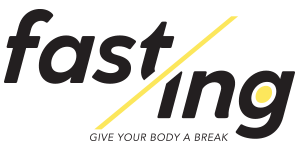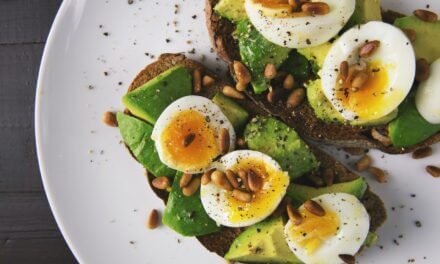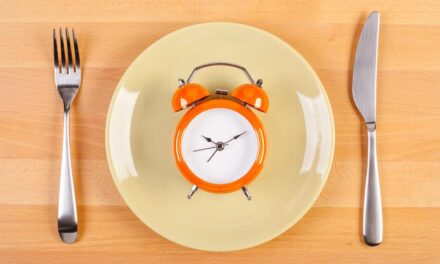10 Ways to Plan for a Year of Fasting

It’s usually said that anywhere from 30 to 40 percent of Americans set New Year’s resolutions annually and—as you could probably guess—the most popular resolutions are to exercise more, save money and lose weight.
If you don’t want to set a resolution—because you’ll probably ditch it in a few weeks anyway—and instead, want to resolve for a healthier year ahead that involves fasting, we’re here to help. If practicing a fasting method in 2021 is one of your goals and you need help getting ready or following through with it, look no further than this guide.
“Fasting is a powerful, effective tool for weight loss,”
“Fasting is a powerful, effective tool for weight loss,” says Shannan Bergtholdt, MS Ed, RD, Fasting Expert, Owner, Revolution Dietitian. “Regular fasting, partnered with nutritious foods and portion control is the nutrition trifecta of what, when, and how much to eat.”
Try these strategies from top experts and studies to use fasting to achieve your new year’s health goals, whether they are weight loss, improved health markers, a fitter body, or better sleep.
Write down short-term and long-term goals.
Kicking the year off with a goal-setting practice will help you have a target to aim for and a way to monitor how you’re doing. Research finds that setting realistic targets helps you be more likely to achieve weight loss successes. Write your short-term goal(s) and long-term goal(s) down and post them where you’ll see them daily at home. An example of a short-term goal might be to stick to your 12-hour circadian rhythm fast for five days this week. A long-term goal could be to work your way up to 16:8 fasting, 5:2 fasting, or something like improving your cholesterol levels in three months. Don’t set unrealistic goals—like ‘I’ll start with a 20:4 fast and stick to it every day this year’—that could set you up for failure. If you have a weight goal in mind, write it down but tell yourself that you can modify it as the year goes on. If you have 50 pounds to lose, you might set a goal to lose 10 pounds by fasting within the first month, but if you don’t reach that, look for areas where you can improve instead of giving up.
Concentrate calories earlier in the day.
“I am a big fan of time-restricted eating, says Dr. Joan Salge Blake, EdD, RDN, LDN, clinical professor, Boston University, host of the podcast, “Spot On!” “The time-restricted eating method that I’m a fan of is one that limits eating late at night. It’s about having more of your calories early in the day and then decreasing as the day goes on.” Good research suggests that circadian rhythms—the body’s biological clock—play a factor in how you metabolize food that you eat.
“Metabolism is different at night than it is during the day. For weight management…follow the old adage, which is to eat breakfast like a king, lunch like a prince, and dinner like a pauper,” suggests Dr. Salge Blake. The typical American diet is an inverted triangle where many of us skip breakfast or don’t eat much and then increase calories as the day goes on, eating a large dinner late at night. While that works for some people, it can lead to weight problems for others, and one large study follow-up found that men who ate late at night had a 55 percent higher risk for cardiovascular heart disease than those men who didn’t eat late.
Find the calorie-intake balance that works for you.
While fasting longer in the late afternoon and evening and eating more calories earlier in the day is a healthy practice, it doesn’t always work for people, especially if you’re a night owl or do shift work. Some people fast most of the morning and then save their calories for the afternoon and early evening, in particular, if they’re following a time-restricted eating plan like 16:8 or 20:4. “I probably get most of my calories in later in the day and at night while following a 16:8 fasting plan,” says EA Stewart, MBA, RDN. “That works for me. But I do try to be more cognizant about cutting back in the evening because I do think there is research supporting getting those calories earlier in the day for calorie-burning benefits
“I recommend starting where you’re at with a fasting style that seems like it’ll work for you, but if you’re eating 80 percent of your calories at night, you definitely should shift that to eating more calories earlier in the day,” says Stewart.
Eat according to your circadian rhythms.
Circadian rhythm fasting means you’re eating during the 12 hours or so during the daytime when you’re moving and need more energy, and fasting for 12 hours. If you’re just starting to dabble in time-restricted eating, eating according to a circadian rhythm fasting plan can be beneficial for you. You may already be following this eating pattern and not know it. “It would make all the sense in the world to put fuel into the tank via food earlier in the day [when you need energy] and to keep fueling your body throughout the day,” says Dr. Salge Blake. “Then when it’s nighttime and you are more sedentary, add less fuel.” This follows a natural course your body takes for feeding and resting. The absence of adequate nutrients while fasting turns nutrient pathway sensors in the body “off” which stimulates the stress response as well as preservation and rejuvenation in the body. Concentrating calories in the early part of the day can also help you fall asleep faster and stay asleep.
Change what’s on your plate.
You knew this was coming but we wouldn’t recommend tips on having a healthier year ahead by following fasting methods without suggesting healthy eating. “If we can just change what’s on the plate to make it healthy and then change when we eat it, many Americans will be in better shape,” says Dr. Salge Blake. Add plenty of high-fiber vegetables to your diet to fill up and get more nutrients and vitamins. Eat whole grains for fiber and lean protein to help preserve lean muscle. Learn more about using food as medicine here.
Follow fasting practices to live longer.
Decades of research have shown that calorie restriction contributes to longevity. Yet, many of us don’t adopt this approach because it is very challenging, says Bergtholdt. “Fasting is the best way to get the same pro-longevity effect of calorie restriction while allowing flexibility of not overly restricting calories.” Anything that’s going to cut calories and allow you to maintain a healthier weight is going to help you live longer, says Dr. Salge Blake. “What can you do to increase your life span and to make a difference in your health?” she asks. “What patterns can you change in your life that will, chronically that will help you increase longevity? That’s the key. Improving longevity is a chronic thing,” says Dr. Salge Blake. “You can’t just say, I practiced a fasting lifestyle for a month so therefore, I got seven more minutes on my life. It’s not going to happen that way. Chronic, ongoing behaviors are going to help with longevity.”
Come up with ways to pass a fast.
If you’ve never fasted before and are in fact a chronic snacker or nibbler throughout the day, you may find it challenging to pass the time while you aren’t eating in the beginning. That’s why it’s so important to have some activities in mind that you can do if you’re tempted to eat at night, find yourself hungry in the morning while waiting to break a fast, or are working your way through an alternate day fast, 5:2 fast, or water fast. This can be a great time to do a quiet activity like journaling or reading, watching a favorite show or funny movie (yes,laughter is good for the body), connecting with a friend or family member over the phone or video streaming service, or, getting some movement in by going on a walk or doing light exercises. Try to stay away from the kitchen or where you’re confronted with food and reframe this time as “me time”. It could also be your “focused time” and an hour or two when you concentrate on being more productive at work. Or, if you scratch your creative itch, work on a home project, learn how to sew, make art, play music, bake, whip up a new recipe (if you won’t be tempted to nibble), or do something else that makes you feel clever. Here are 10 lifestyle rituals that can help when you are fasting.
Concentrate on refeeding properly.
If you think that you’re going to fast daily or weekly and then break that fast with a burger, fries, and shake to make up for the time you didn’t eat and replenish calories, you’ll be hurting your efforts and your health. No matter what fasting plan you’re on, it’s important to eat healthy, wholesome foods, particularly when you’re breaking a fast. How you feel after fasting has a lot to do with the foods you eat during refeeding time. Properly refueling after a fast has a host of digestive benefits and may help gut bacteria. Discover 3 healthy, delicious soups to have when breaking a fast.
Add nuts.
If you’re considering following a fasting-mimicking diet (FMD), also consider what you eat after you complete your fast. Plan to eat a variety of vegetables as well as olive oil and nuts. This type of diet looks a lot like the Mediterranean diet which has been touted for many years as one of the healthiest diets to follow. Eating nuts can help with satiety when you’re trying to lose weight and studies have shown that people who eat nuts regularly tend to live longer than people who don’t.
Incorporate movement.
While you’ll probably lose weight by following a fasting method on its own, you’ll be giving your weight loss and health a boost if you start or continue an exercise routine. As you’re looking ahead at your goals for 2021, add a fitness or activity component to your weekly plan. That could be walking for 30 minutes, five days a week; strength training two days a week; practicing yoga to help with stress and ease muscle pain; or incorporating another activity you love. While the research on using fasting and exercise together to lose more weight is a bit mixed, animal studies have found that using fasting and exercise may help to improve muscle performance.
Analyze your stress levels before starting a fasting plan.
Many of us have had a trying 2020 but it’s important to take a step back and make sure you’re looking ahead at 2021 with a positive mindset and one of hope. It’ll go a long way in ensuring that you’re successful with your healthy eating plan. It’s best to be well-rested and relaxed before starting new behavior to make the act of trying something new less stressful. Tell yourself that you won’t let this new way of eating become a source of stress for you. Find healthy ways to handle stress. And remember, if you’re having a challenging day you can always break your fast. Learn more about how to work your way through pandemic stress.





